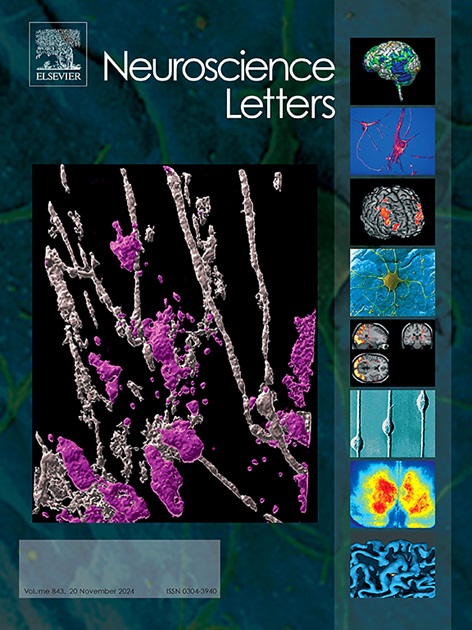Similar adenosine neuromodulation in male and female hippocampal and prefrontocortical synapses of young and aged mice
IF 2.5
4区 医学
Q3 NEUROSCIENCES
引用次数: 0
Abstract
Caffeine is the most widely consumed psychoactive drug worldwide, acting through adenosine receptors at non-toxic doses. Epidemiological studies have reported a different impact of caffeine in men and women, namely in the incidence of brain stroke and neurodegenerative diseases. This prompts the tentative hypothesis that adenosine neuromodulation might be different in males and females, which we now tested. In hippocampal slices from adult mice, the potency and efficacy of 2-chloroadenosine to inhibit synaptic transmission and the disinhibitory effect resulting from selective blockade of adenosine A1 receptors, were superimposable in males and females. Likewise, a similar adenosine neuromodulation was observed in synapses of the hippocampus and prefrontal cortex of aged male and female mice. This excludes the possibility that differences in A1 receptor function contribute to the sex-specific central effects of caffeine, which may arise from variations in metabolism, interactions with sex hormones, or differences in brain connectivity—factors that remain to be investigated.
相似的腺苷神经调节在雄性和雌性海马和前额皮质突触的年轻和老年小鼠
咖啡因是世界上最广泛使用的精神药物,在无毒剂量下通过腺苷受体起作用。流行病学研究报告了咖啡因对男性和女性的不同影响,即脑中风和神经退行性疾病的发病率。这就提出了一个初步假设,即腺苷神经调节在男性和女性中可能是不同的,我们现在对此进行了测试。在成年小鼠海马切片中,2-氯腺苷抑制突触传递的效力与选择性阻断腺苷A1受体的去抑制作用在雄性和雌性中是重叠的。同样,在老年雄性和雌性小鼠的海马和前额皮质突触中也观察到类似的腺苷神经调节。这排除了A1受体功能的差异导致咖啡因的性别特异性中枢效应的可能性,这可能源于新陈代谢的变化、与性激素的相互作用或大脑连接的差异——这些因素仍有待研究。
本文章由计算机程序翻译,如有差异,请以英文原文为准。
求助全文
约1分钟内获得全文
求助全文
来源期刊

Neuroscience Letters
医学-神经科学
CiteScore
5.20
自引率
0.00%
发文量
408
审稿时长
50 days
期刊介绍:
Neuroscience Letters is devoted to the rapid publication of short, high-quality papers of interest to the broad community of neuroscientists. Only papers which will make a significant addition to the literature in the field will be published. Papers in all areas of neuroscience - molecular, cellular, developmental, systems, behavioral and cognitive, as well as computational - will be considered for publication. Submission of laboratory investigations that shed light on disease mechanisms is encouraged. Special Issues, edited by Guest Editors to cover new and rapidly-moving areas, will include invited mini-reviews. Occasional mini-reviews in especially timely areas will be considered for publication, without invitation, outside of Special Issues; these un-solicited mini-reviews can be submitted without invitation but must be of very high quality. Clinical studies will also be published if they provide new information about organization or actions of the nervous system, or provide new insights into the neurobiology of disease. NSL does not publish case reports.
 求助内容:
求助内容: 应助结果提醒方式:
应助结果提醒方式:


